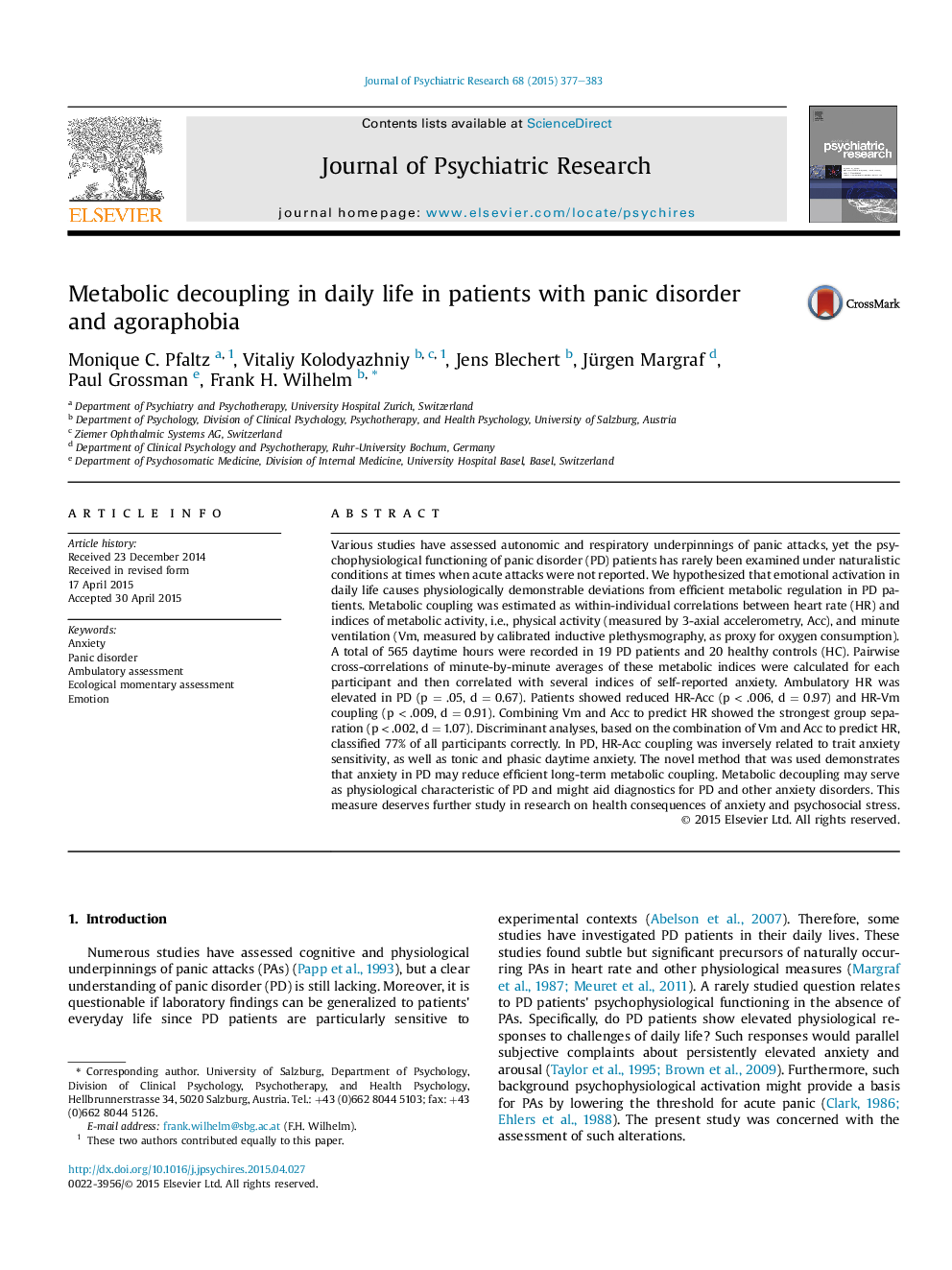| Article ID | Journal | Published Year | Pages | File Type |
|---|---|---|---|---|
| 6800591 | Journal of Psychiatric Research | 2015 | 7 Pages |
Abstract
Various studies have assessed autonomic and respiratory underpinnings of panic attacks, yet the psychophysiological functioning of panic disorder (PD) patients has rarely been examined under naturalistic conditions at times when acute attacks were not reported. We hypothesized that emotional activation in daily life causes physiologically demonstrable deviations from efficient metabolic regulation in PD patients. Metabolic coupling was estimated as within-individual correlations between heart rate (HR) and indices of metabolic activity, i.e., physical activity (measured by 3-axial accelerometry, Acc), and minute ventilation (Vm, measured by calibrated inductive plethysmography, as proxy for oxygen consumption). A total of 565 daytime hours were recorded in 19 PD patients and 20 healthy controls (HC). Pairwise cross-correlations of minute-by-minute averages of these metabolic indices were calculated for each participant and then correlated with several indices of self-reported anxiety. Ambulatory HR was elevated in PD (p = .05, d = 0.67). Patients showed reduced HR-Acc (p < .006, d = 0.97) and HR-Vm coupling (p < .009, d = 0.91). Combining Vm and Acc to predict HR showed the strongest group separation (p < .002, d = 1.07). Discriminant analyses, based on the combination of Vm and Acc to predict HR, classified 77% of all participants correctly. In PD, HR-Acc coupling was inversely related to trait anxiety sensitivity, as well as tonic and phasic daytime anxiety. The novel method that was used demonstrates that anxiety in PD may reduce efficient long-term metabolic coupling. Metabolic decoupling may serve as physiological characteristic of PD and might aid diagnostics for PD and other anxiety disorders. This measure deserves further study in research on health consequences of anxiety and psychosocial stress.
Related Topics
Life Sciences
Neuroscience
Biological Psychiatry
Authors
Monique C. Pfaltz, Vitaliy Kolodyazhniy, Jens Blechert, Jürgen Margraf, Paul Grossman, Frank H. Wilhelm,
